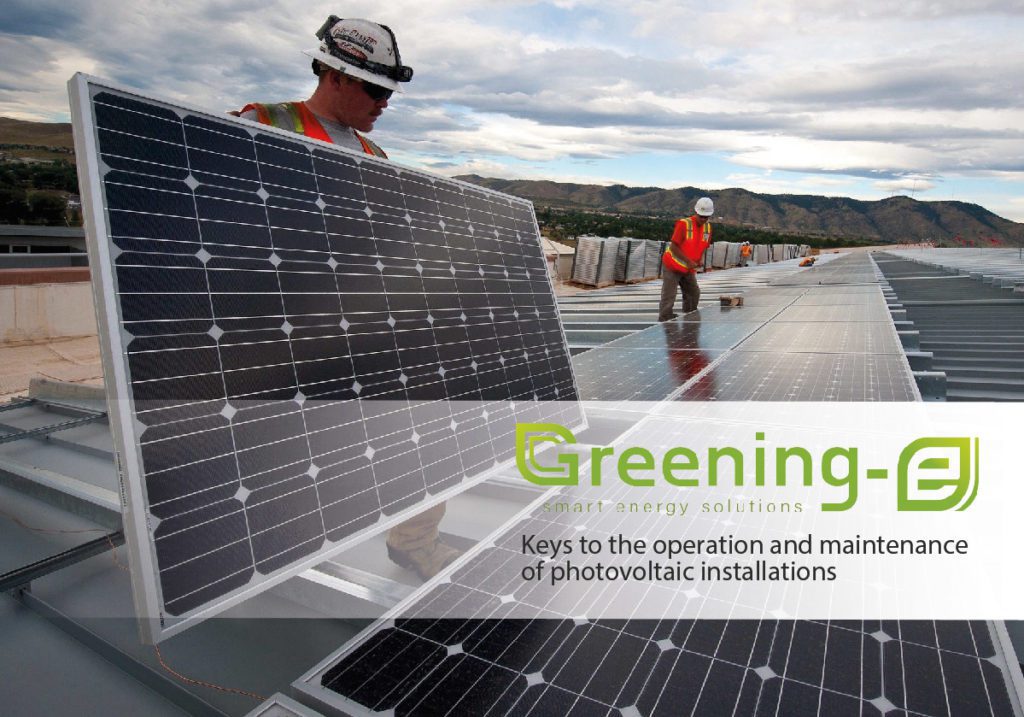The operation and maintenance of photovoltaic installations aims to maximize the efficiency and productivity of the installation. The approach can be preventive or corrective, and is of the utmost importance for its proper functioning.
More and more companies are joining the trend of renewable energies, and more particularly solar energy. And with this, more and more companies specialize in this sector, which increases competition and lowers prices. The problem arises when we choose a company that does not offer us sufficient guarantees for the management of the operation and maintenance service of the photovoltaic installation in which we have invested.
Consequently, for a business to be attractive, the installations must be of quality, with a long and efficient lifespan, which allows the amortization of the investment. This is achieved with installations free of errors leading to generation problems.
However, there are times when these problems are beyond the company’s control, such as those which are the consequence of the actions of nature. Natural degradation, thunderstorms or discoloration of solar cells are problems that can occur without warning. Others, such as component failure (panels, inverters, etc.), micro-ruptures in cells, or shaded or damaged areas, loose cables, lightning damage, etc. can make the installation ineffective, but they can be monitored and repaired so that the installation continues its function.
This is possible thanks to technological advances which help in the operation and maintenance of photovoltaic installations. The objective is to maximize the efficiency and productivity of the installation, and the approach must be preventive. If there are problems such as those mentioned, caused by bad weather, manufacturing errors or when the components reach the end of their life, then the objective will be corrective.
Preventive actions
These actions are during the operation phase of the installation:
Actions prior to the operation of the installation: they begin in the design, and continue when the components are chosen, requiring the corresponding guarantees of the equipment, upon receipt and when the insurance is taken out.
Choice of the contract model: operation and maintenance contract, type of maintenance (predictive, preventive and corrective), supplies, insurance, monitoring …
Operation and maintenance actions
These actions concern the supervision of the installation, its progress, its generation and its resources. They concern the guarantees that have been contracted (economic, corporate, etc.) and the monitoring of services.
Among these actions, it is important to point out the services or supplies essential to the operation of an installation. These include monitoring, electricity consumption, insurance or supplies.
The other aspects to be taken into account in this phase are technical failures and complaints to manufacturers and insurance companies. These aspects must be well defined to avoid risks and solve problems in the most effective way.
Currently, these services are specialized, because little by little and with the growing demand for these sustainable energy services, it becomes more important to prevent and correct the errors that allow the customer to be satisfied.
Greening-e’s maintenance service
At Greening-e, we have a specific maintenance service in all the installations we develop, as well as for customers who have an already developed photovoltaic installation and who do not have this service.
Our maintenance service includes daily monitoring of the installation and an annual visit to each installation. During these visits, a condition check and correction of any anomalies in the photovoltaic field (modules and structure), electrical installation, inverters, storage systems, etc. are performed.
In each case, the actions to be carried out and their frequency are defined beforehand, keeping all of this in a maintenance file.
Daily monitoring of installations and supervision of their performance allows us to perform predictive maintenance, i.e. to recognize any failures that may arise in the future in the installation. In this way, possible breakdowns and future incidents are reduced and minimized.

